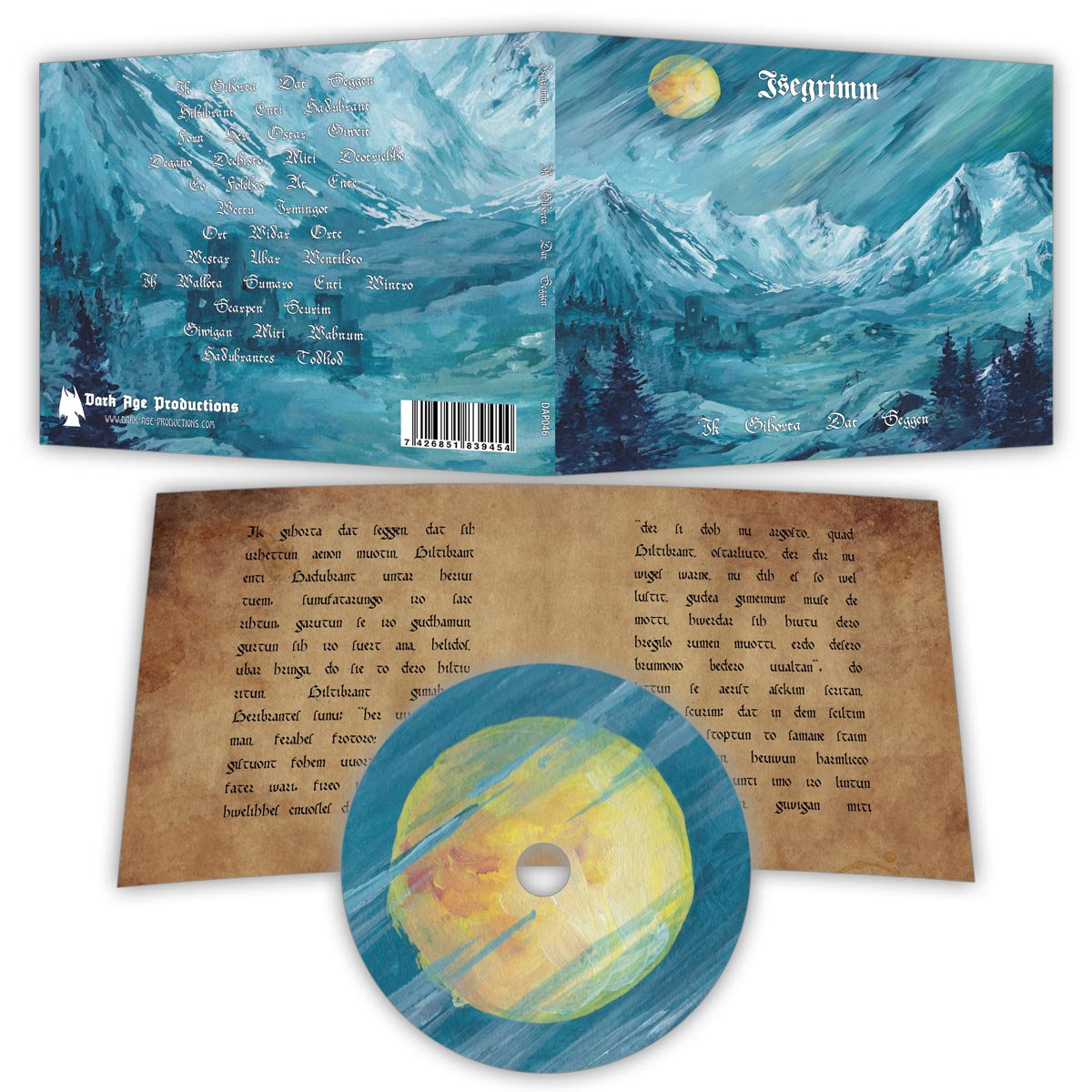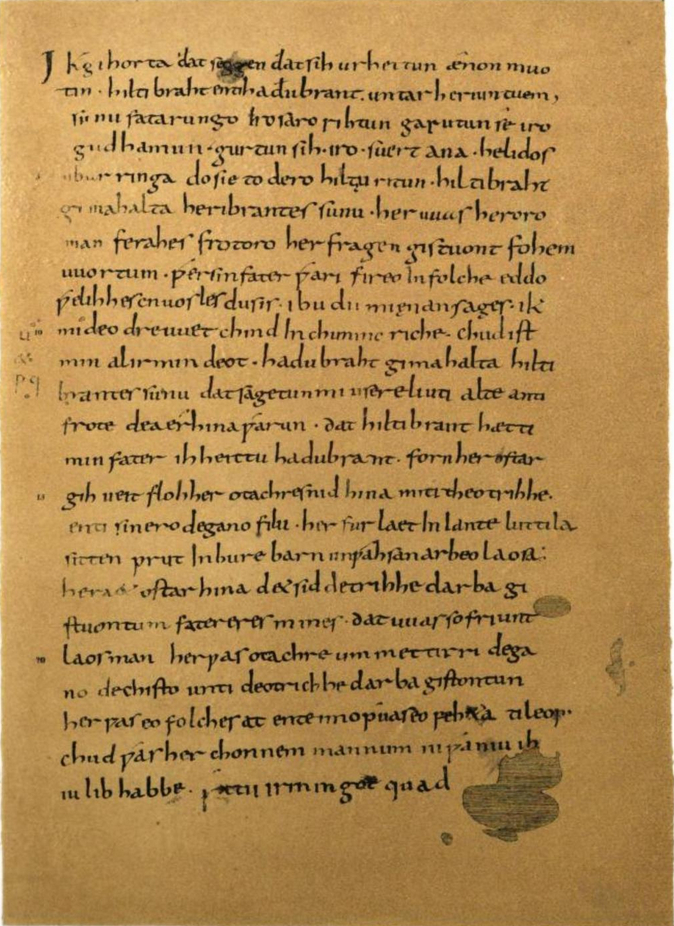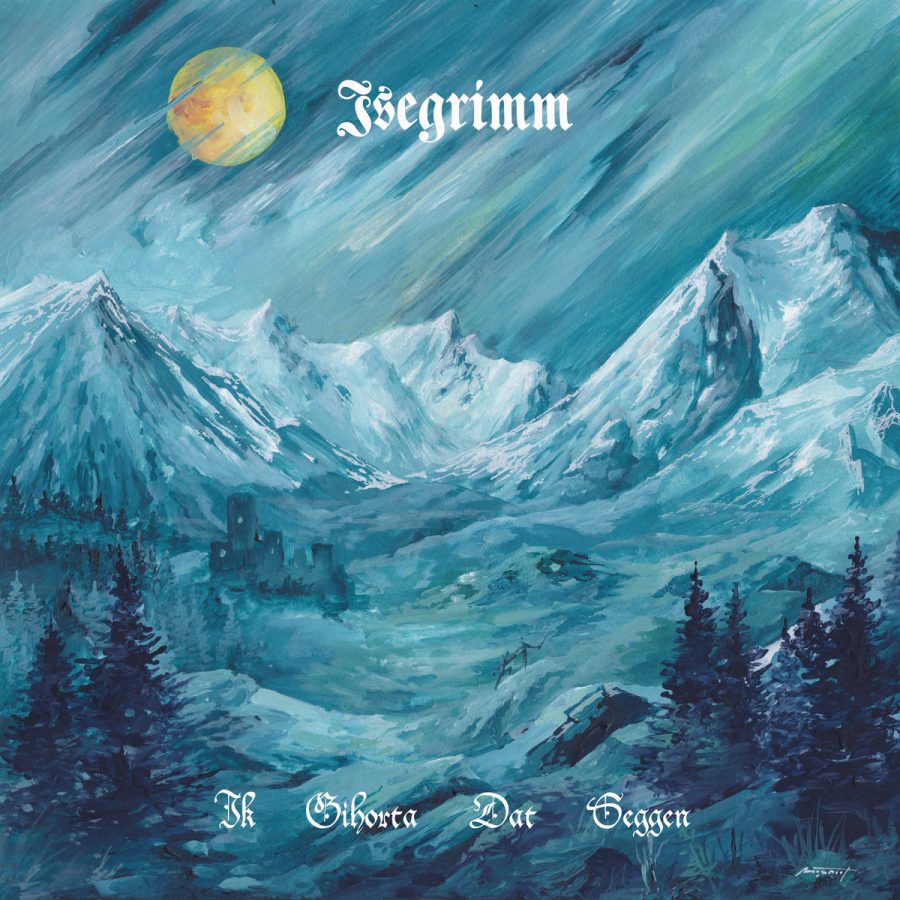Editor’s Note: We are very pleased to share with you the second review from the talented Matteo Brusa! If you want to be notified of all our posts, be sure to sign up for email notifications, found in the right panel of the webpage (just scroll down and look to your right). Facebook is worthless for promotion these days and there aren’t a lot of other alternatives, so please consider signing up!
Artist: Isegrimm
Album: Ik Gihorta Dat Seggen
Release date: 18 January 2019
Label: Dark Age Productions
Reviewer: Matteo Brusa
This is what I heard, and it will blow you away
In the vast and mostly featureless landscape of contemporary Dungeon Synth, Isegrimm stands like a massive, towering fortress, one where travelers who dare to cross its path can always be sure to find a safe haven. Now reaching its third installment (plus a split with Irish fellow dungeoneer Argonath), Max Berger’s project has established itself as one of the most engaging and recognizable acts in the current scene, and Ik Gihorta Dat Seggen further consolidates its status.

As titles suggest, the album draws its inspiration from the poem Hildebrandslied, the only surviving written example of High German winileod (epic “folk song”) from the early Middle Ages. For those unfamiliar with the subject matter, the “Song of Hildebrand” (“Ik Gihorta Dat Seggen” being the first verse, roughly meaning “This is what I heard”) narrates of a father and son destined to fight each other to death, a recurring theme in Indo-European mythology: in the war between Theoderic king of the Ostrogoths and Odoacer king of Italy, two champions, named Hildebrand and Hadubrand, meet on the battlefield to engage in duel; Hildebrand, the eldest, soon realizes he is facing his long lost son and tries to reconcile with him, being rebuffed by Hadubrand. Bound by the ancient Germanic warrior code, he can’t reject the duel, so they begin to fight, Hildebrand lamenting his sorrowful fate. The manuscript ends here, but likely, as occurring in all other examples of the trope in European literature, the original poem would finish with Hildebrand prevailing and killing his own son, an outcome accordingly stated in the album’s final song “Hadubrantes Todliod” (“The death song of Hadubrand”).

With the aid of a number of guests, including Matt Seeb of the acclaimed Hedge Wizard, Daithí O’Mathúna of Argonath and Italian singers Paolo Ferrante and Chiara Gangemi from the experimental vocal act The Voices, Max Berger manages to create an outstandingly evocative and engaging soundtrack to such an epic and tragic tale. “Medieval ambient” could be the perfect description for the sound and feel of Ik Gihorta Dat Seggen: a sustained note introduces the listener to a masterful sonic representation of early Middle Ages Europe, which slowly unfolds through a variety of different atmospheres and moods, providing for an astonishingly immersive experience, greatly enhanced by Alex Crispin’s crisp (no pun intended) and polished mastering work. Arrangements are rich and dynamic, ranging from dense synthetic orchestral passages to quieter and sparser ambient sections; there is tribal chanting and drumming, full-on sampled horns heroically blowing, synthetic pads delicately weaving backdrops for piano and sampled woodwinds flourishes, and more. While the compositional style is mainly based on repetition and layering as is common in Dungeon Synth tradition, the use of vocals and percussions throughout makes this album really stand out: the vocals specifically are a highlight, adding a strong human presence and often taking the lead with choirs and chanting, giving off at times a distinct ethnic feel, at times evoking sacrality. Track number six, “Wettu Irmingot” (“God the Excellent testify”) is perhaps the most brilliant example: through juxtaposition of obsessive percussions with skillfully written, arranged and performed intertwining vocal parts, it manages to sound like a Gothic (literally) version of Enigma, yet in a way not so far removed from certain neoclassical darkwave (early Weltenbrand also comes to mind). Almost each song could stand as well on its own, but in the album’s context, they seamlessly fit together and complement each other, creating a very cohesive and tight opus. Even the closing track, which is kind of an oddball, being a slow atmospheric metal song with guitar, bass and drums, doesn’t sound out of place at all: on the contrary, it perfectly sits within the flow of the album, concluding it with a captivating change of pace.
By combining old school Dungeon Synth with progressive elements, Ik Gihorta Dat Seggen undoubtedly turns out to be Isegrimm‘s masterpiece, an album deserving widespread praise and recognition in the scene as an example of keeping things fresh while maintaining a strong connection with the genre’s roots and spirit.
Written by: Matteo Brusa


Leave a Reply